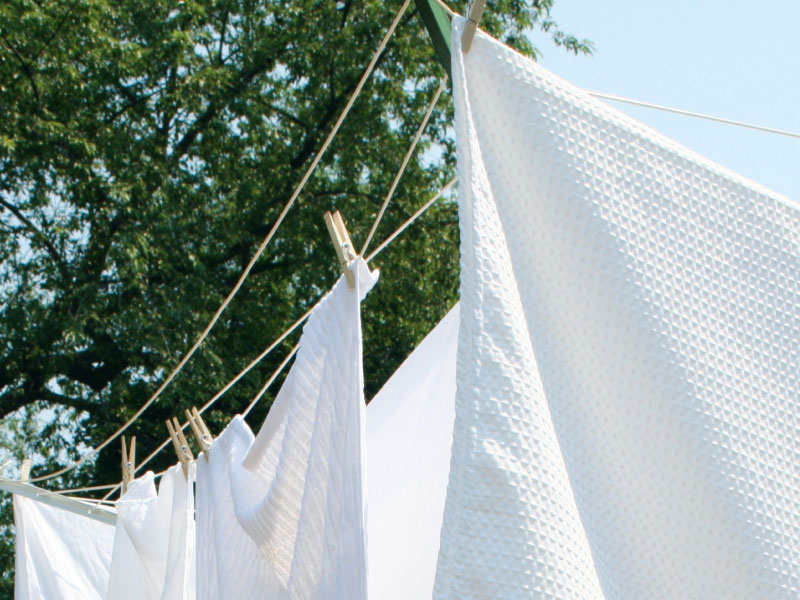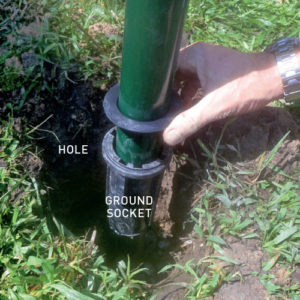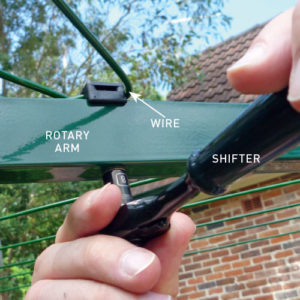Install A Rotary Clothesline

Save money, time and energy by drying clothes outside, using wind power to get the job done faster.
A rotary clothesline is an Aussie icon and for good reason.
In the 1950s and 60s most backyards featured a Hills Hoist, made of heavy unpainted metal with steel wires, and generations of children grew up swinging on its arms.
Although Lance Hill didn’t actually invent the rotary clothes hoist, he was the first to successfully market it in large numbers from 1945.
According to the Powerhouse Museum in Sydney, Hills’ prototype was made from tubing salvaged from the underwater boom that hung under the Sydney Harbour Bridge to catch enemy submarines in WWII.
The winding gear was made from cast aluminium and worked to hoist the line up into the breeze.
Advances in design
The rotary clothesline has come a long way since Lance Hill knocked together the first version for his wife.
Its initial popularity may have been the result of a postwar baby boom but housewives were soon clamouring for a labour-saving hoist.
These days there’s a clothesline to suit every space and they come in a variety of powdercoated colours.
They range up to five metres in diameter and many can be folded down or removed for entertaining.
Rotary hoists are also easy to install DIY, taking one person about an hour to dig the hole then insert the ground socket and post, plus the time it takes the concrete to cure.
Keeping it clean
A clothesline is exposed to the elements and accumulates dirt, sap and spiderwebs, so it’s a good idea to brush off visible debris and wipe the line down regularly to avoid marking clean clothes.
Use a soft cloth or kitchen sponge and a mild detergent diluted with water to clean the rotary hoist every few weeks, allowing it to dry before using.
Keep pegs clean and dry as well so they won’t leave rust or dirt stains on clothing. Don’t leave them out on the line or they will deteriorate rapidly. Store them in the laundry instead.
Line-drying benefits
Hanging clothes on a line is gentler on them than using the tumble dryer. The laundry smells fresher and sunlight is a natural sanitising agent, zapping any germs and bacteria.
Drying clothes outdoors is also more energy efficient, as using the dryer for just four hours a week costs $10 a month.
Hanging washing on the line is also good incidental exercise, getting you out in the fresh air.
Clothes that are correctly hung on the line need less ironing than when tumbled in a dryer, and the risk of shrinkage is lower.
Install a rotary hoist








